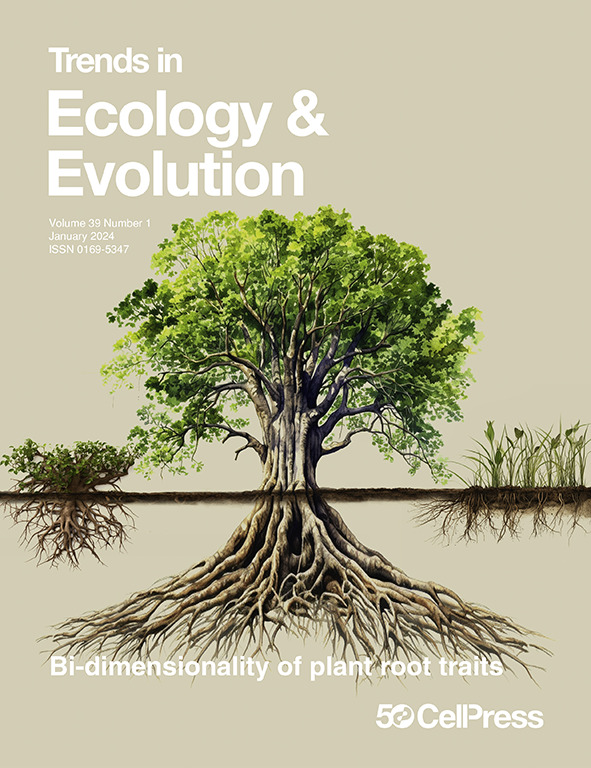土壤微生物:抵抗沙漠化的地下卫士。
IF 17.3
1区 生物学
Q1 ECOLOGY
引用次数: 0
摘要
土壤微生物通过多种机制,如根鞘形成、坏死块积累、生物土壤结皮、胞外多糖(EPS)的产生、菌丝网络和碳酸钙沉淀等,在地下抵抗荒漠化。在这里,我们讨论了土壤微生物如何推动旱地生态系统的恢复,为面对荒漠化的土壤恢复提供了有前途的、基于自然的策略。本文章由计算机程序翻译,如有差异,请以英文原文为准。
Soil microbes: below-ground defenders against desertification.
Soil microbes act as below-ground defenders against desertification by several mechanisms, such as rhizosheath formation, necromass accumulation, biological soil crusts, exopolysaccharide (EPS) production, hyphal networks, and calcium carbonate precipitation. Here, we discuss how soil microbes drive ecosystem recovery in drylands, offering promising, nature-based strategies for restoring soils in the face of desertification.
求助全文
通过发布文献求助,成功后即可免费获取论文全文。
去求助
来源期刊

Trends in ecology & evolution
生物-进化生物学
CiteScore
26.50
自引率
3.00%
发文量
178
审稿时长
6-12 weeks
期刊介绍:
Trends in Ecology & Evolution (TREE) is a comprehensive journal featuring polished, concise, and readable reviews, opinions, and letters in all areas of ecology and evolutionary science. Catering to researchers, lecturers, teachers, field workers, and students, it serves as a valuable source of information. The journal keeps scientists informed about new developments and ideas across the spectrum of ecology and evolutionary biology, spanning from pure to applied and molecular to global perspectives. In the face of global environmental change, Trends in Ecology & Evolution plays a crucial role in covering all significant issues concerning organisms and their environments, making it a major forum for life scientists.
 求助内容:
求助内容: 应助结果提醒方式:
应助结果提醒方式:


